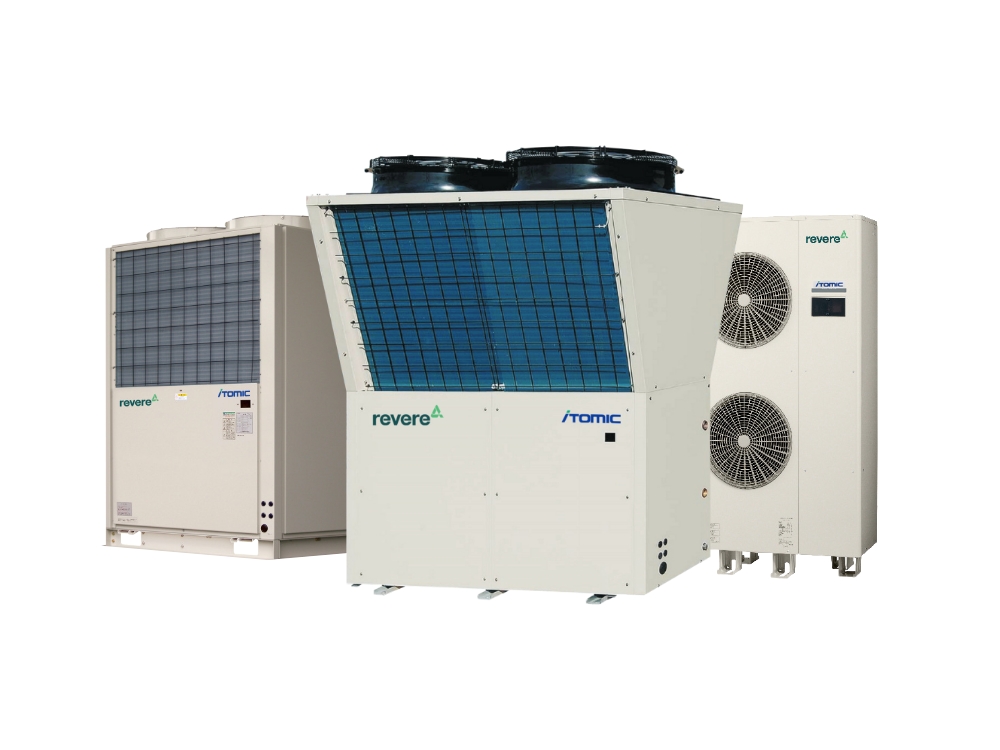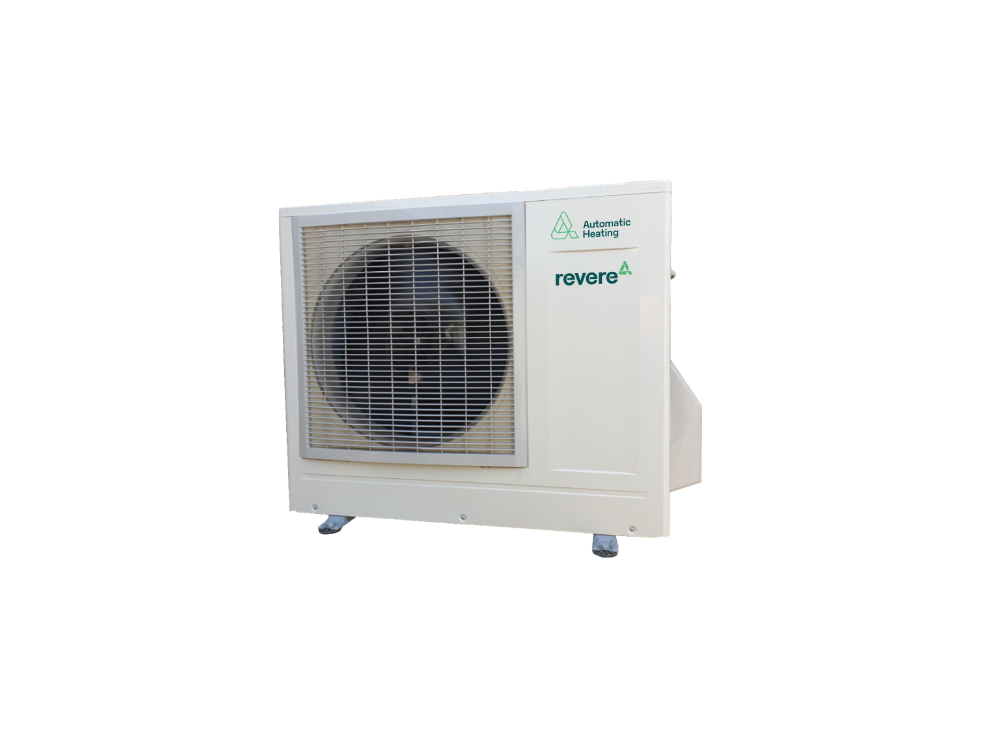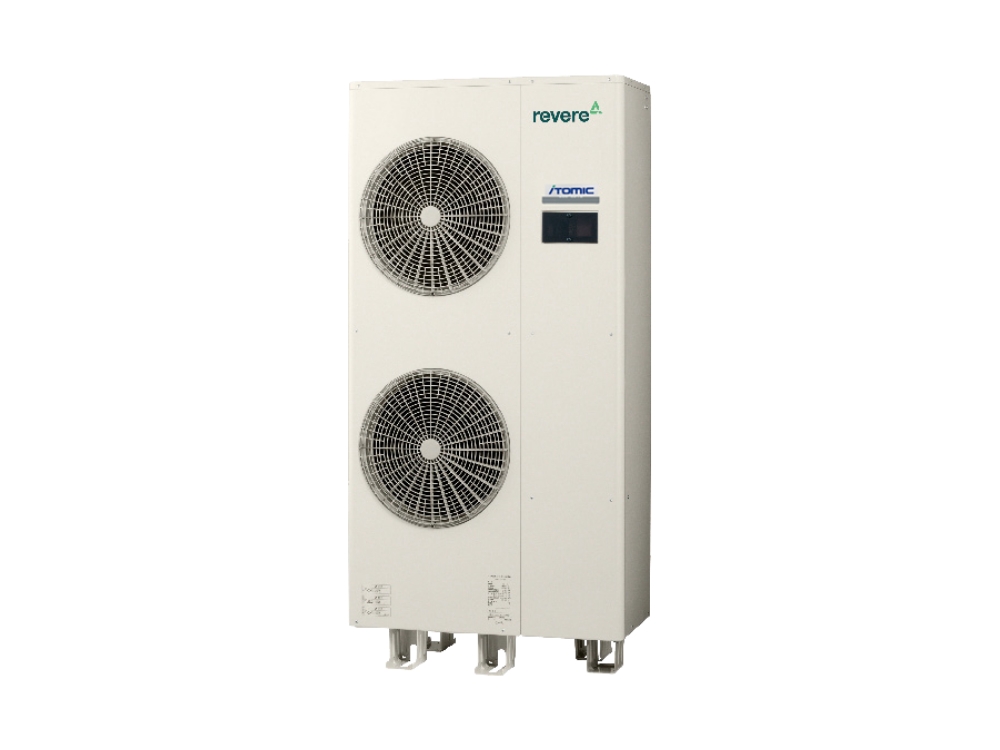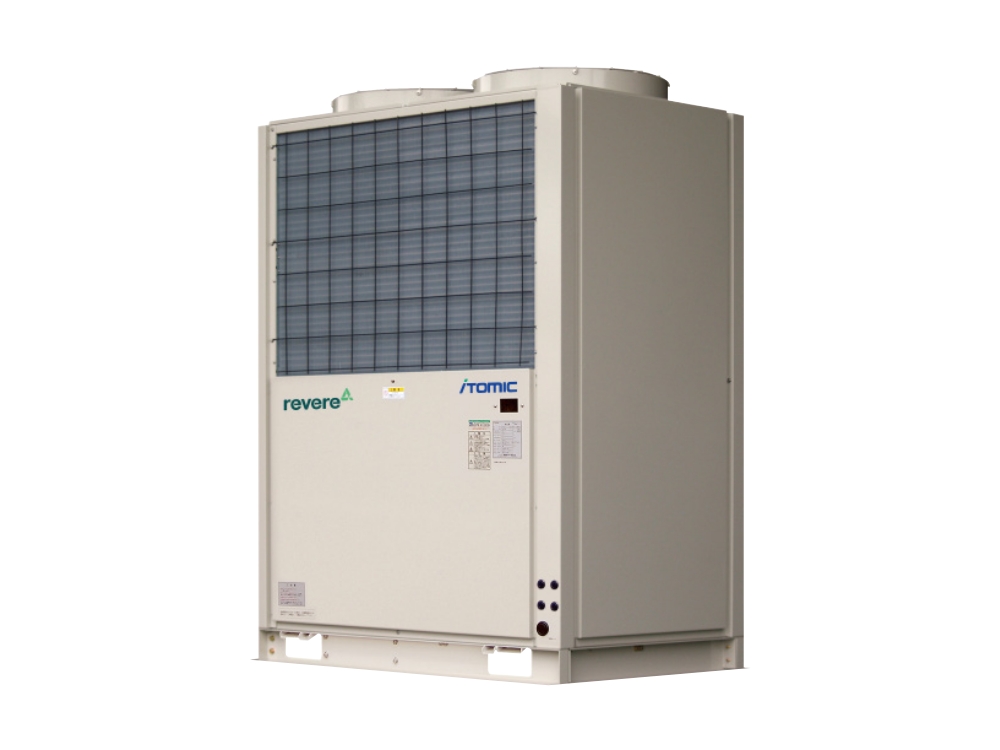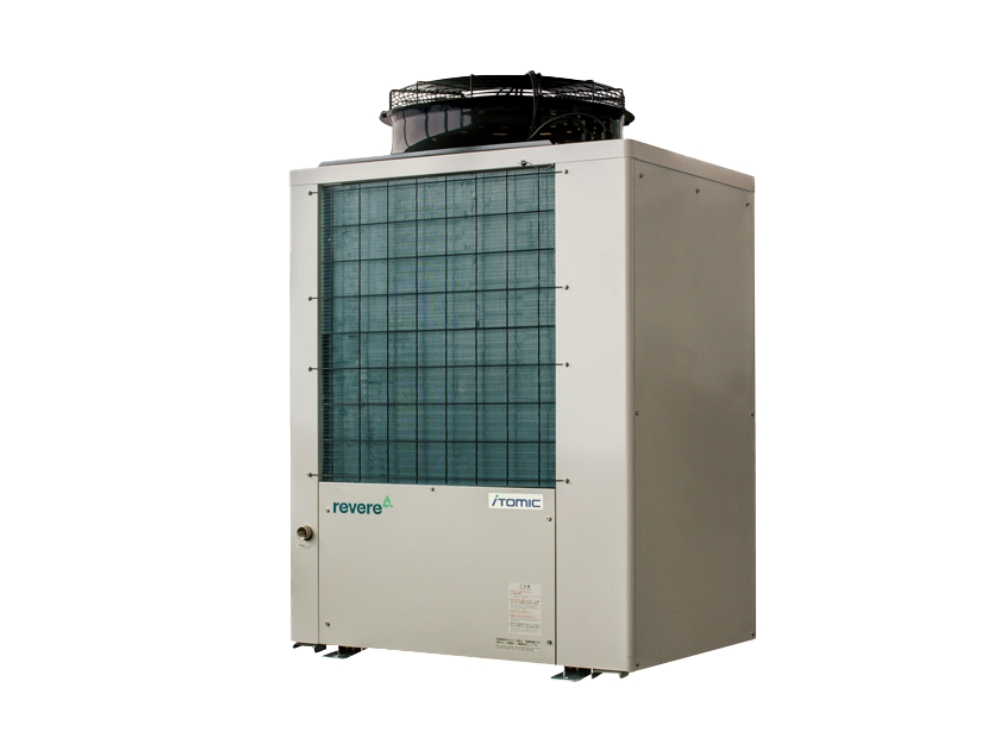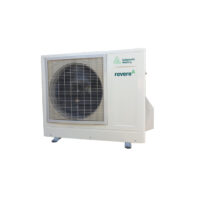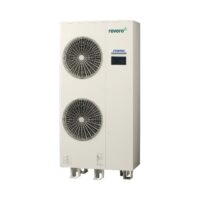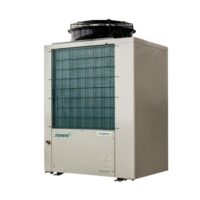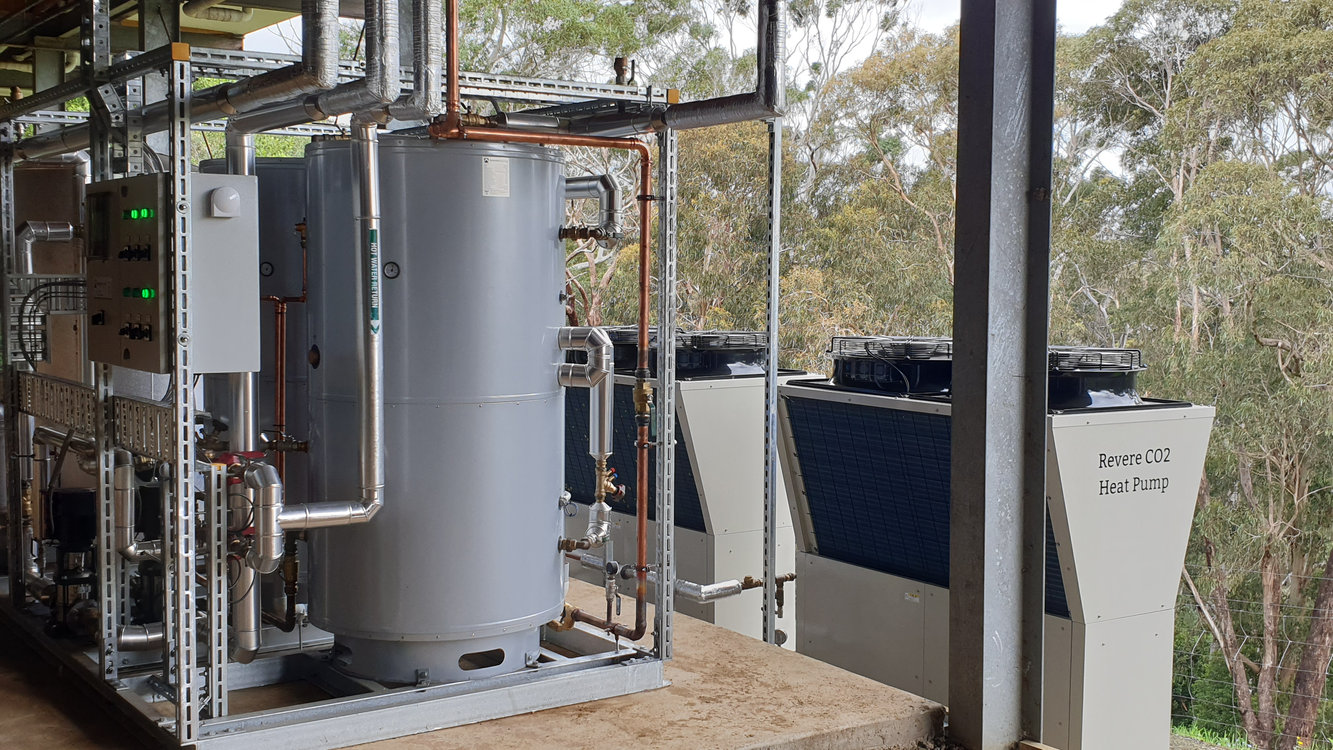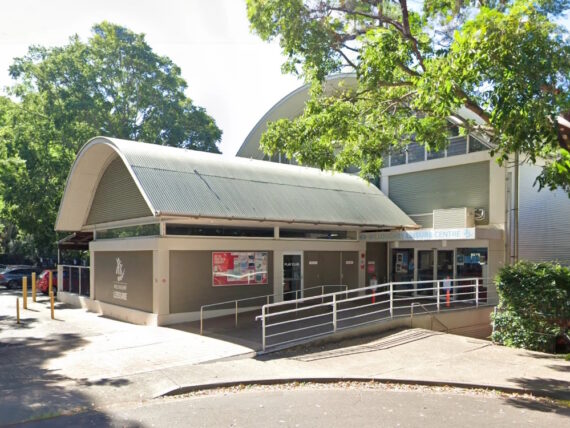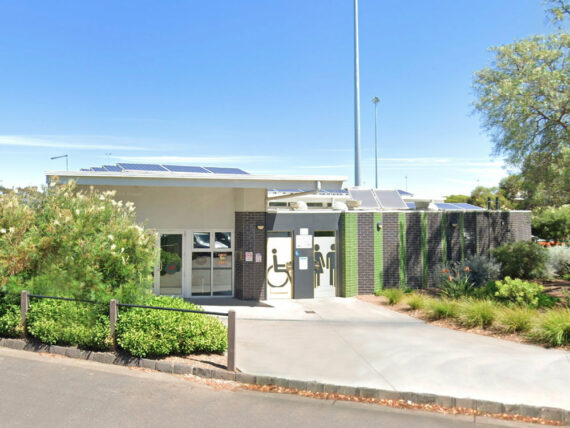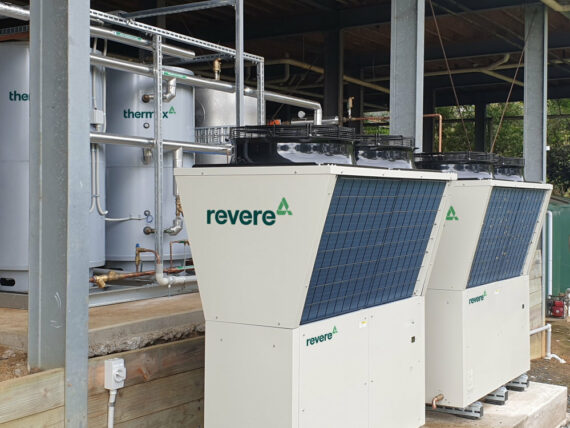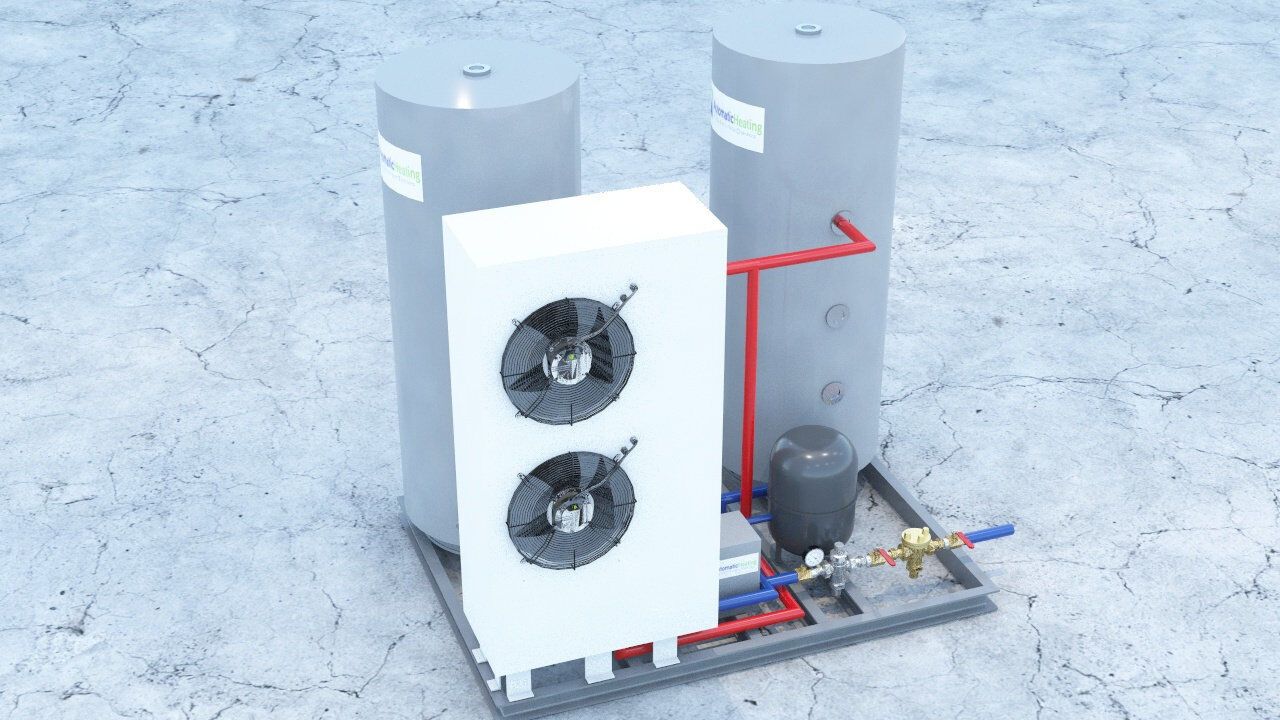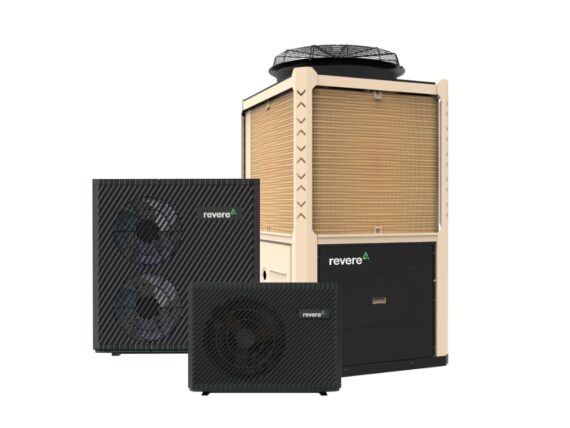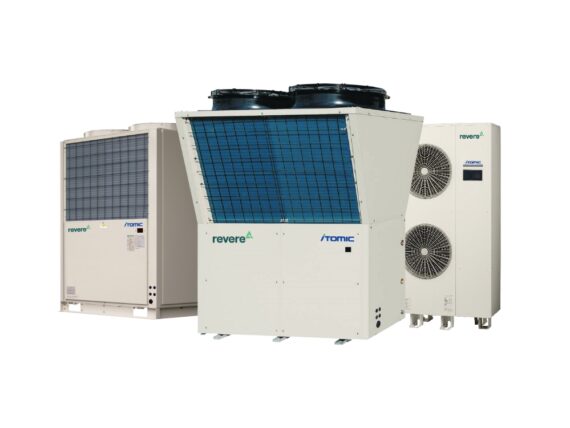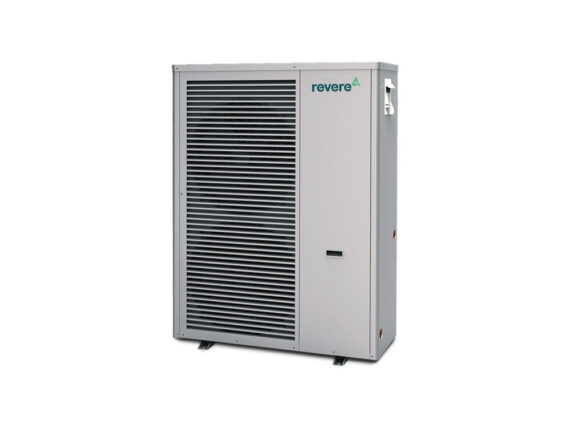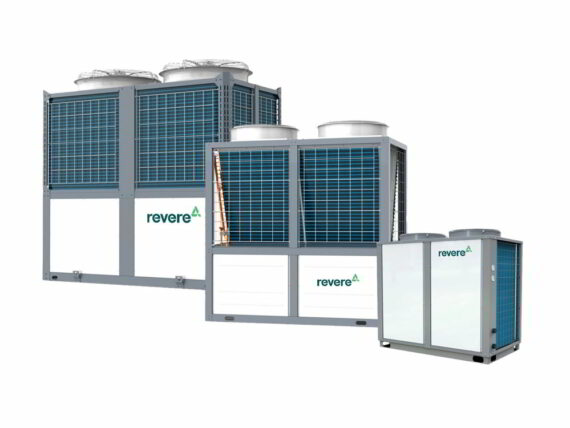Product Overview
-
Product Range
Revere CO2 Heat Pump
Heating Capacity Range
5 - 80kW
Maximum Heating Water Temperature
90°C
Efficiency*
Average COP 3.9
Refrigerant
R744 (CO2)
Outdoor Option
Yes
Cascadable
Yes
Building J Code 2019 Compliant
Yes
* Efficiency varies according to model, water temperature and ambient conditions. Refer to Specifications for more details. - Using proven technology and ground-breaking design, the Revere™ CO₂ Heat Pump system is powered by electricity and utilizes heat extracted from the air to produce heat energy to make hot water.A Heat Pump is a highly efficient eco-friendly system that converts one unit of electrical energy into four units of heating energy which achieves significant cost savings compared to alternative heating systems using electricity or gas.

The unique capacity of the Revere™ CO₂ Heat Pump to produce 90°C hot water makes it suitable for use in a wide range of industrial, commercial and residential projects, including food processing plants, dairies, shopping centres, apartments, hotels, restaurants, hospitals, aged care, recreational and educational facilities. Revere™ CO₂ Heat Pumps can also be adopted with a high level of safety as the absence of combustion reduces the risk of fire.
Instead of the more conventional ammonia or haloalkane (R134A) refrigerant gases, Revere™ CO₂ Heat Pumps use supercritical carbon dioxide as the refrigerant. The technology offers a means of energy conservation and reduces the emission of greenhouse gas. From the energy output side, the operational characteristics of the heat pump are different to conventional systems (such as electric/gas/oil boilers or electric heaters). With conventional systems, 1kW input of energy provides less than 1 kW of output energy or heat. With a CO₂ heat pump system, every 1kW of input energy consumed produces an average of 3.9 x the input as output energy or heat by extracting heat from the outside air.
Summary
Producing 90°C hot water with an average COP of 3.9, makes Revere™ CO₂ Heat Pumps an ideal energy efficient domestic hot water and space heating system for industrial, commercial and residential applications. This ability to convert 1kW of input energy into 3.9kW of output energy represents an ongoing economical and sustainable water heating solution.
Designed for Space and Energy EfficiencyWith a heating performance of 80 kW, the CHP- 080Y2 was developed to reduce high hot water supply costs and large space requirements that inevitably occur in facilities requiring a large hot water supply.
The structure of the Y-shaped frame reduces power consumption and allows units to be installed close together. The heating performance can be switched between three modes in order to adjust the energy to suit how you use hot water, and performance does not decrease* in temperatures down to -15°C.
This flexible system is suitable for a wide range of facilities that use large volumes of hot water, and is durable enough to provide a steady hot water supply for a long time.
* Energy-saving mode only

-
- Flexible – The same system can be simultaneously used for Space Heating & Domestic Hot Water
- Ultra quiet operation – 60dBa
- No combustion – reduces fire risk
- Suitable for up to 60°C ΔT (flow 90°C, return 30°C)
- Suits Australian conditions – accommodates ambient operating temperatures from -5°C to 43°C (Special unit available for -15°C or -20°C)
- Safe – Non-flammable CO₂ refrigerant
- Programmable – can be set to operate during off peak times to benefit from low cost power
- 30% Space Saving due to Y Frame design (CHP-80)
- Versatile – Suitable for a wide range of purposes, from small facilities to large buildings where hot water or heating is required
- Eco friendly – The Revere® CO2 Heat Pump uses natural CO₂ refrigerant. This refrigerant has a global warming potential (GWP) of about 1/1700 that of R410 and zero ozone-depleting potential (ODP)
- Energy efficient – Under optimal conditions, Revere® CO2 Heat Pumps achieve an exceptional coefficient of performance (up to 4.2) which equates to higher energy efficiency. Compared to the traditional electric hot water heater, the CO2 hot water heat pump can save up to 75% heating energy. Further energy cost savings can be achieved through operation during off peak hours, subject to off-peak electrical power supply
- Anti-freeze/Cold Area Units – the heat pump is fitted with a defrost solenoid valve which will open when the evaporator ices up. The hot gas will then flow through the evaporator and melts the ice. Water cannot be stored during defrosting
- Heats up to 90°C – Due to its innovative design, the Revere® CO2 Heat Pump can produce hot water up to 90°C at low and high ambient temperatures (-20°C to 43°C)
- One pass heating – It is suitable for heating water from low to high temperatures (large temperature difference) in one pass
- Reduces storage requirements – Since this hot water heat pump can heat water up to 90ºC, the size of the storage tank can be reduced
- Energy Saving Function – This function is an energy saving function that learns operation patterns from the four previous weeks to prevent unnecessary heating and temperature decreases in stored water through natural heat loss. The use of this function based on operation data stops the unit from boiling water unnecessarily.

Running Cost Comparison

Revere™ CO2 offers Significantly lower running costs & CO₂ emissions.
How It Works
The Revere™ CO2 Hot water heat pump is an energy efficient electric heat pump that uses heat extracted from the air to heat water for industrial, commercial and residential applications. A hot water heat pump removes energy from a low temperature source (ambient air or waste water) and moves it to a high temperature hot water tank.

Advantages of using CO₂ as a refrigerant
This heat pump uses CO₂ as a refrigerant. CO₂ is a natural refrigerant and has an ozone depletion potential (ODP) of zero and a global warming potential (GWP) of 1. CO2 refrigerant is a non HFC refrigerant.
Traditional HFC refrigeration systems affect climate change in two distinct ways: direct and indirect contribution. Direct contribution results from the release of refrigerants into the atmosphere. Indirect contribution refers to the energy used to operate traditional refrigeration equipment. The less energy required to operate the equipment, the lower the impact on the environment.
Refrigerant Characteristics
[table id=4 /]
-

- …
-

